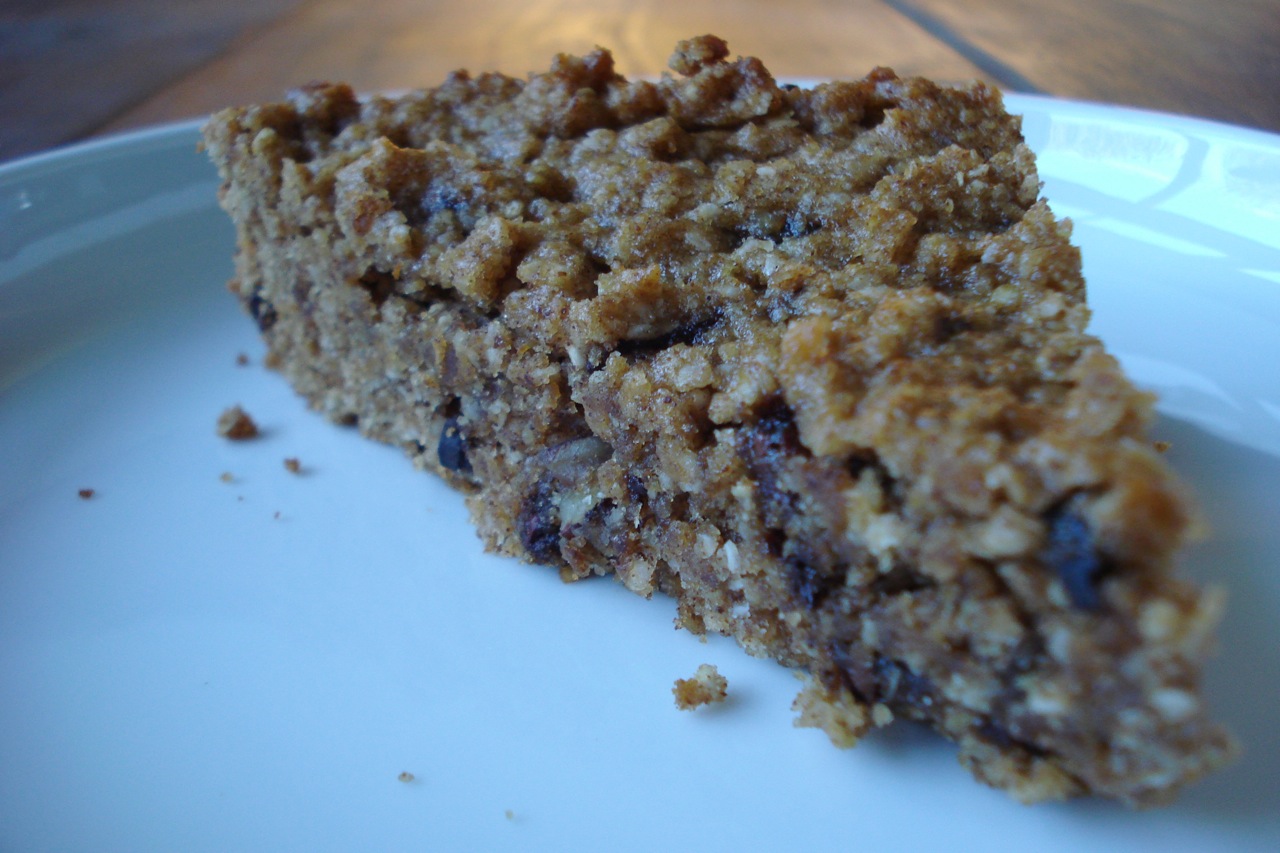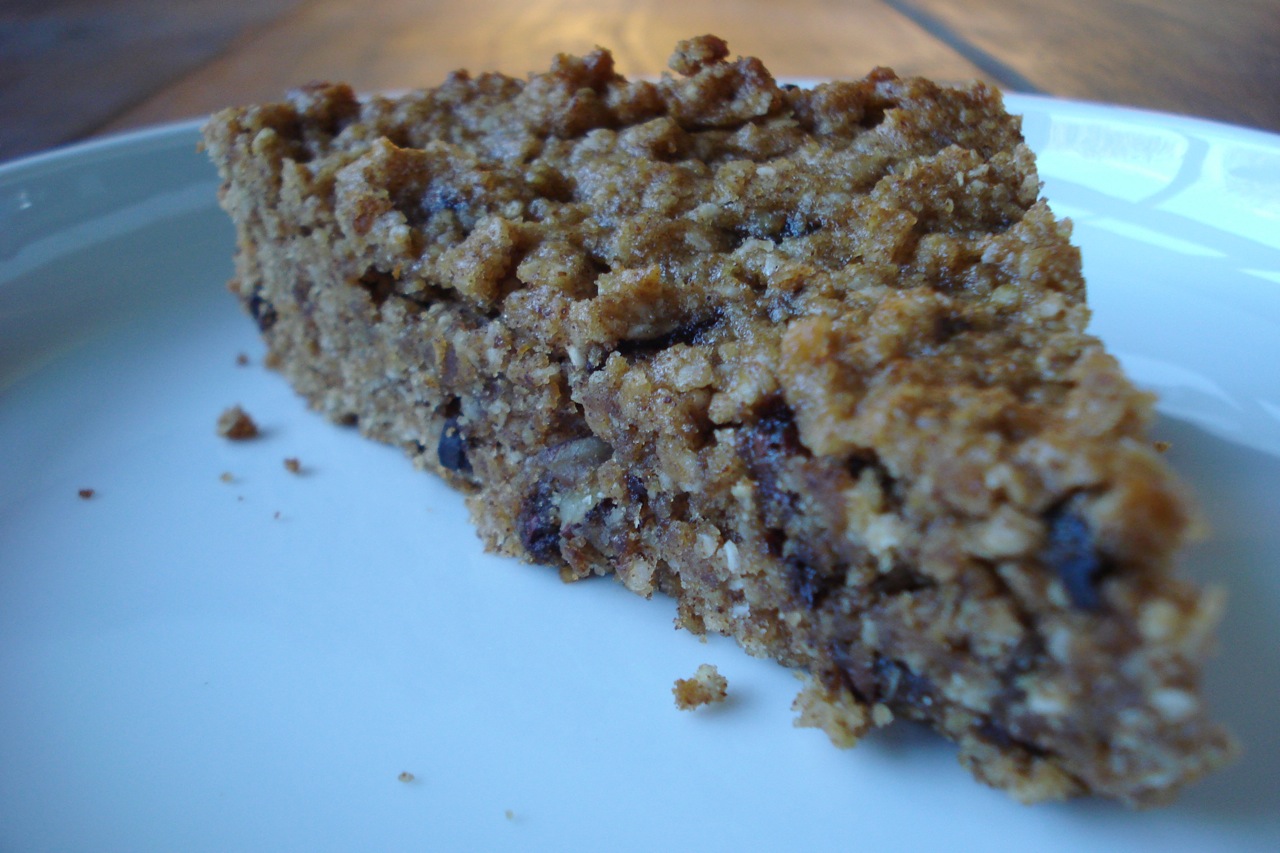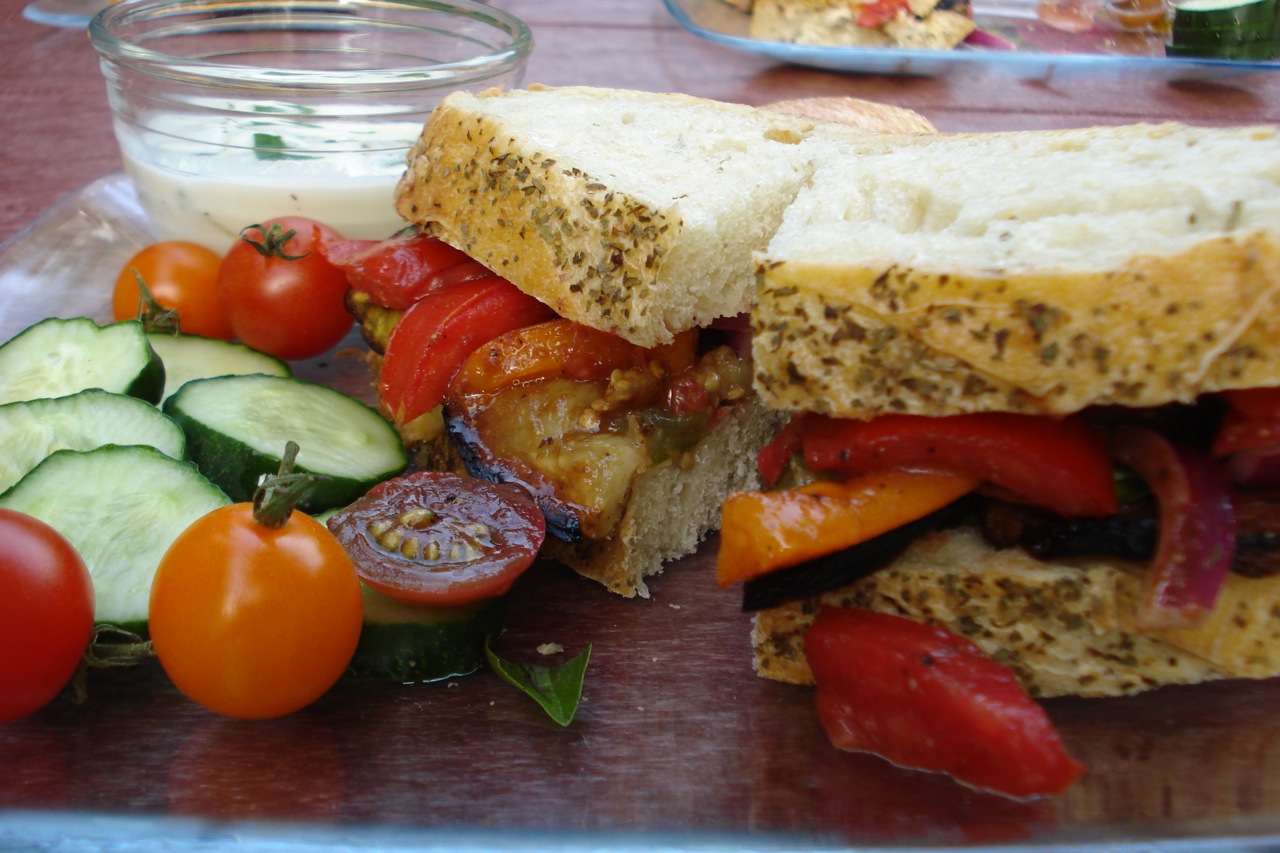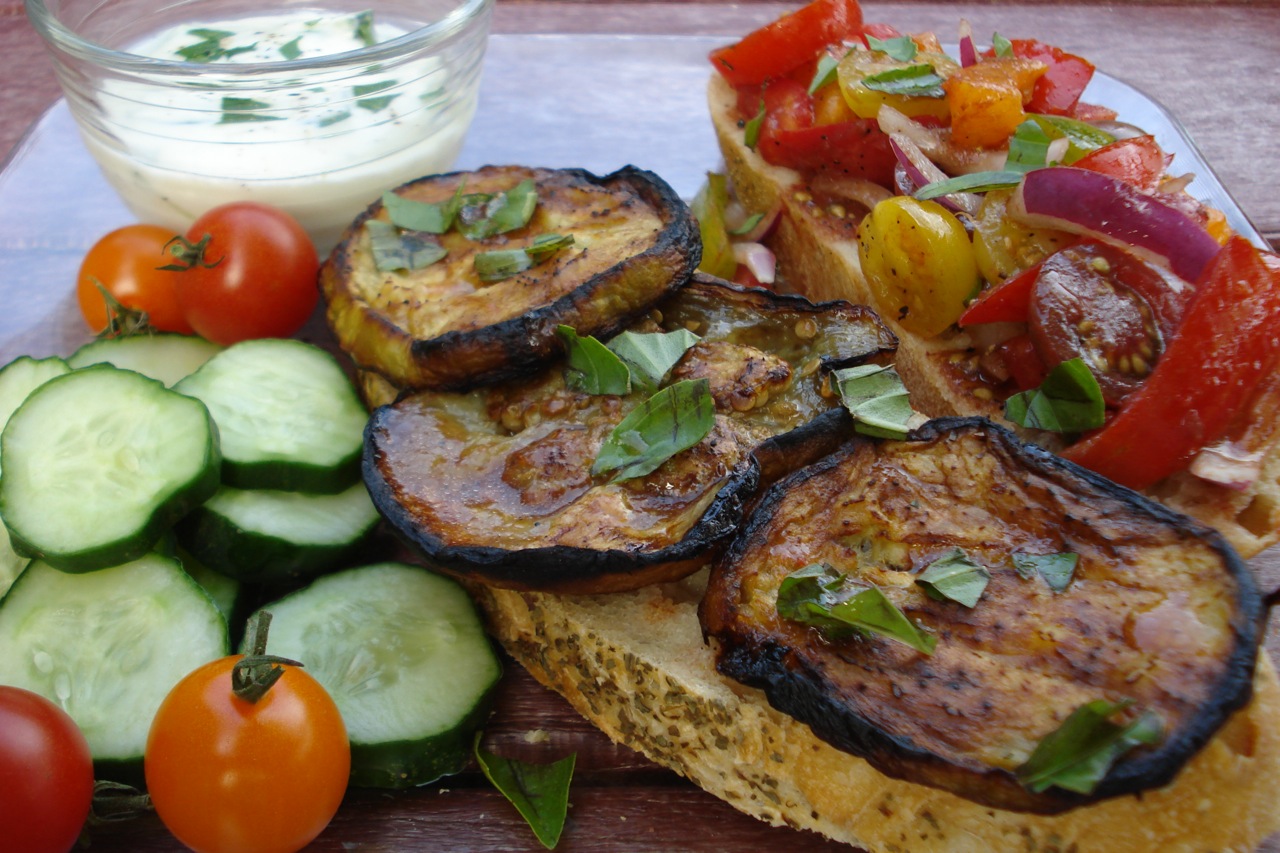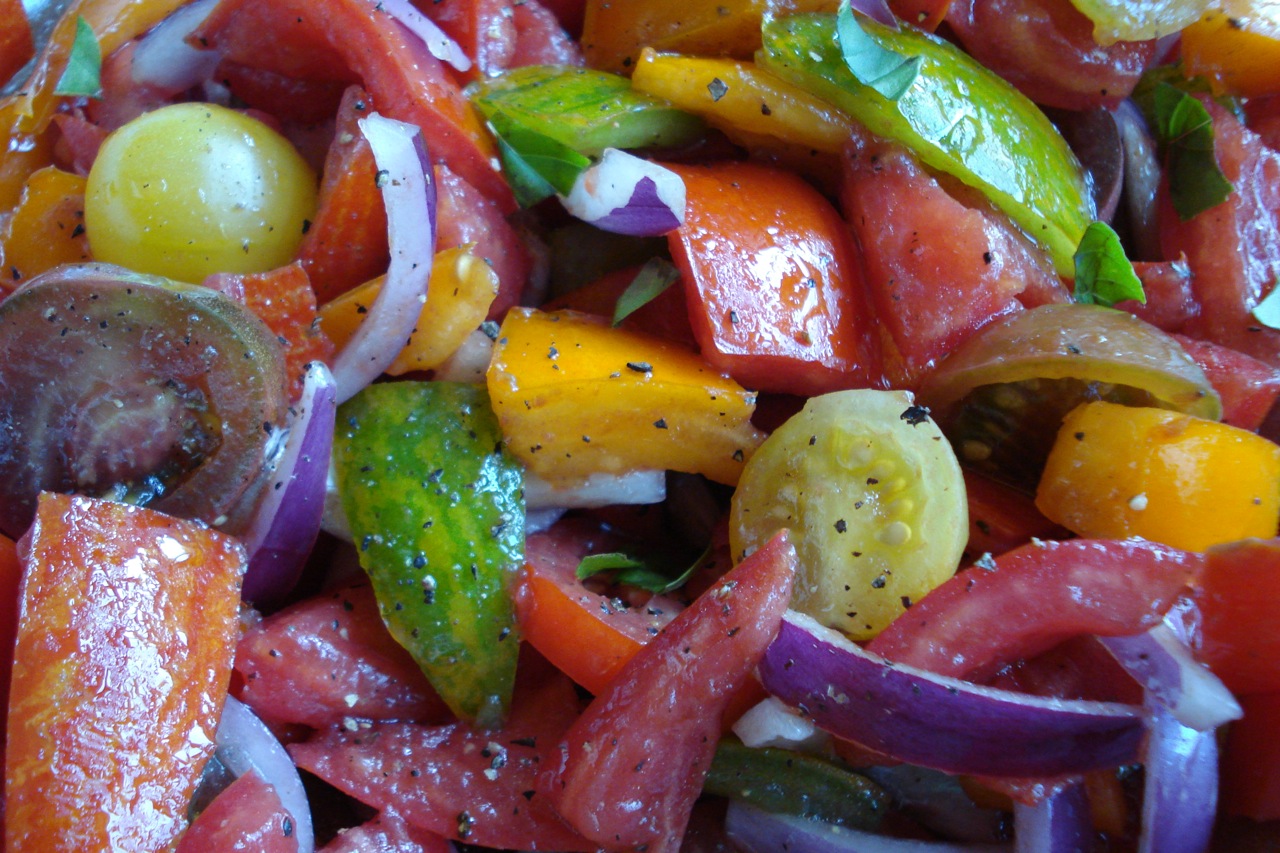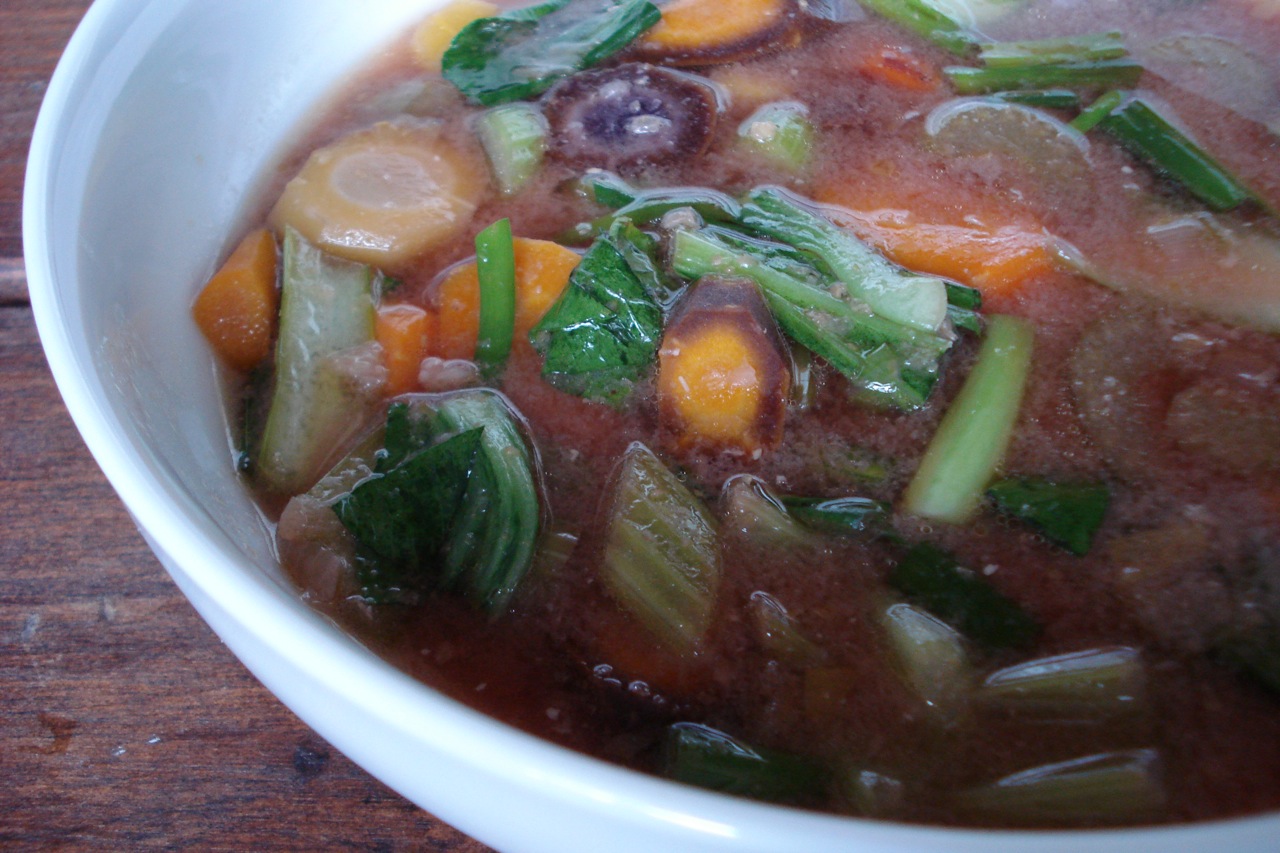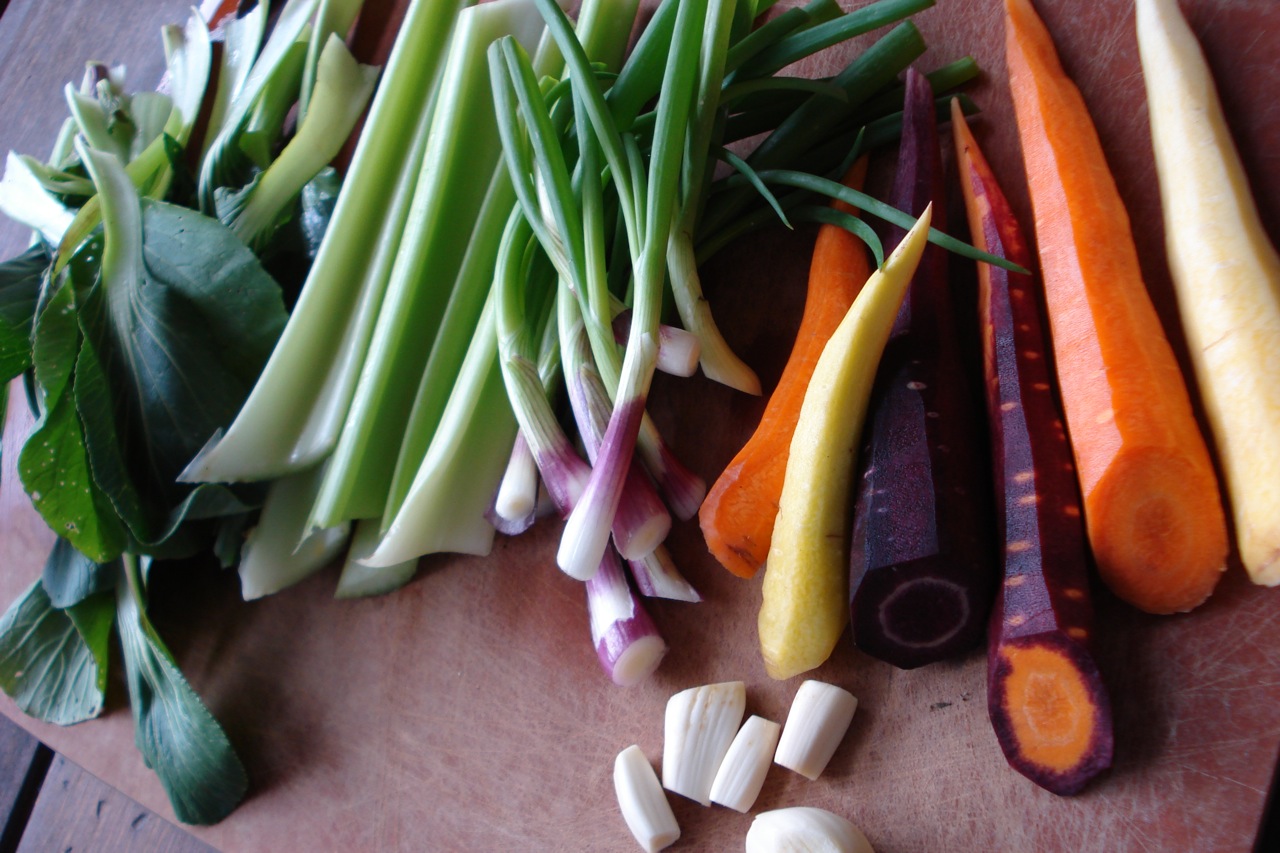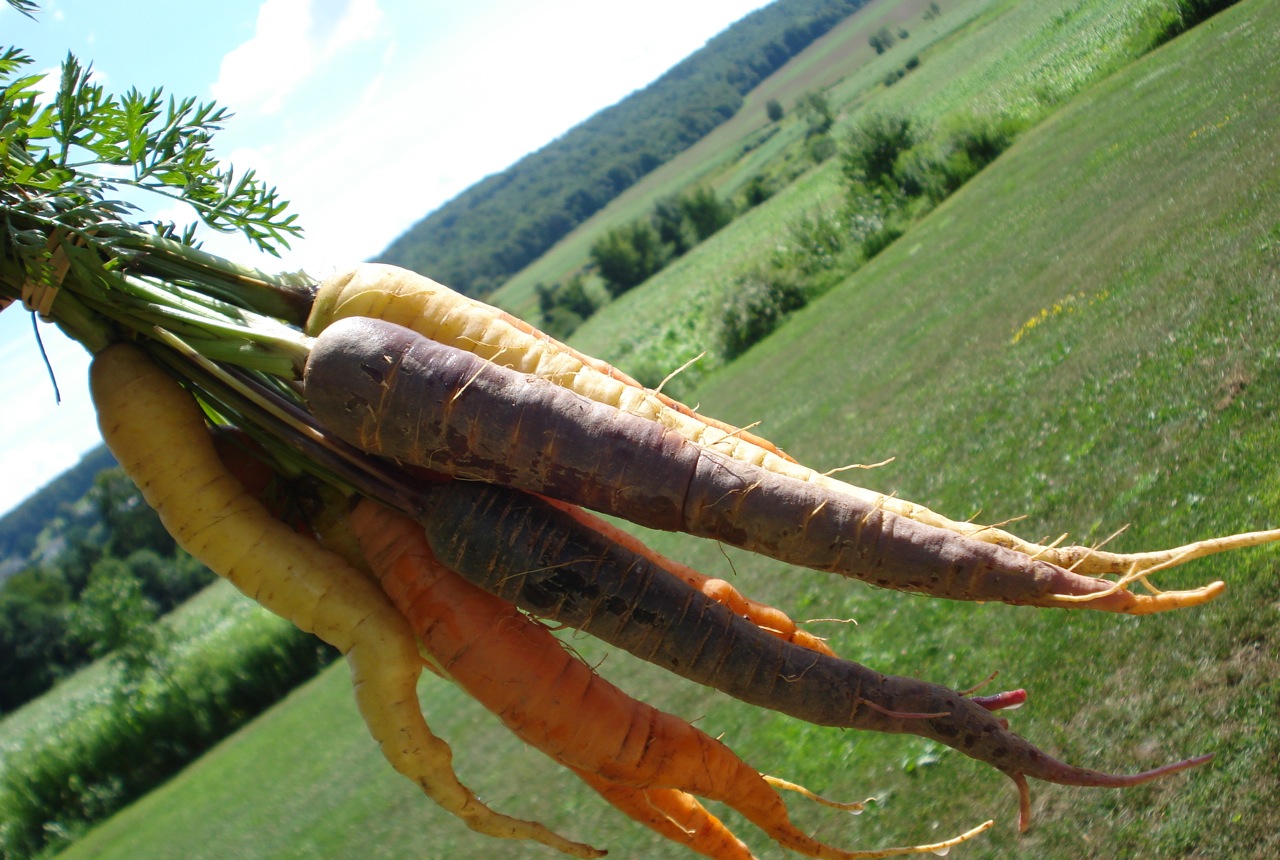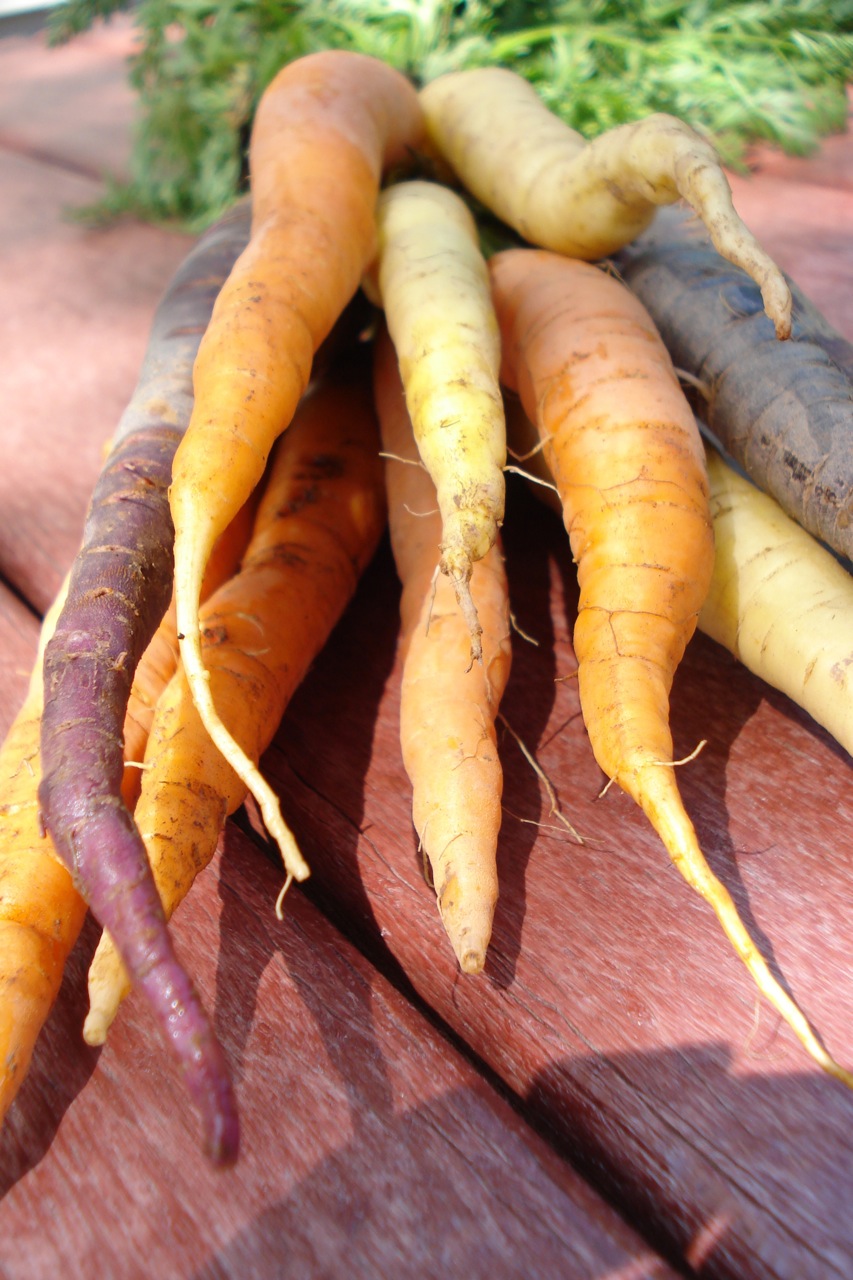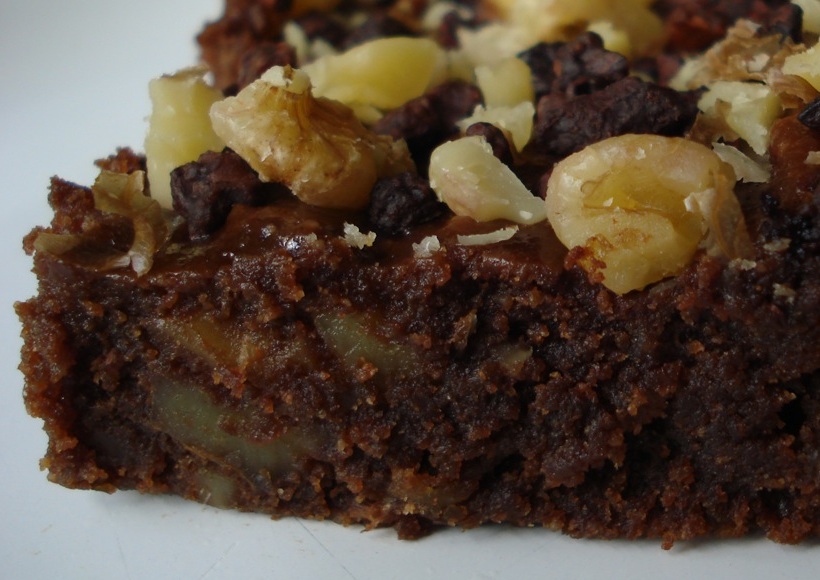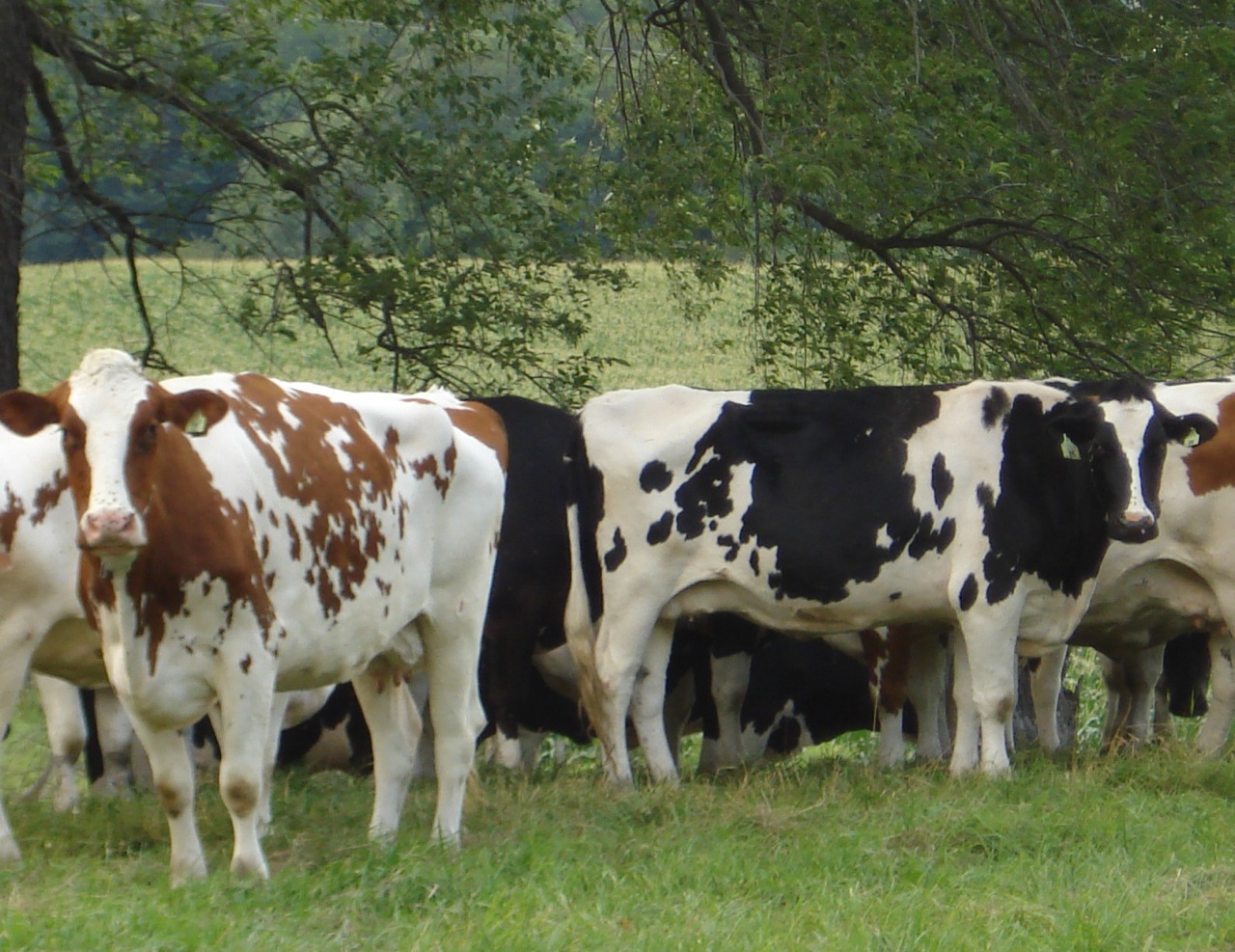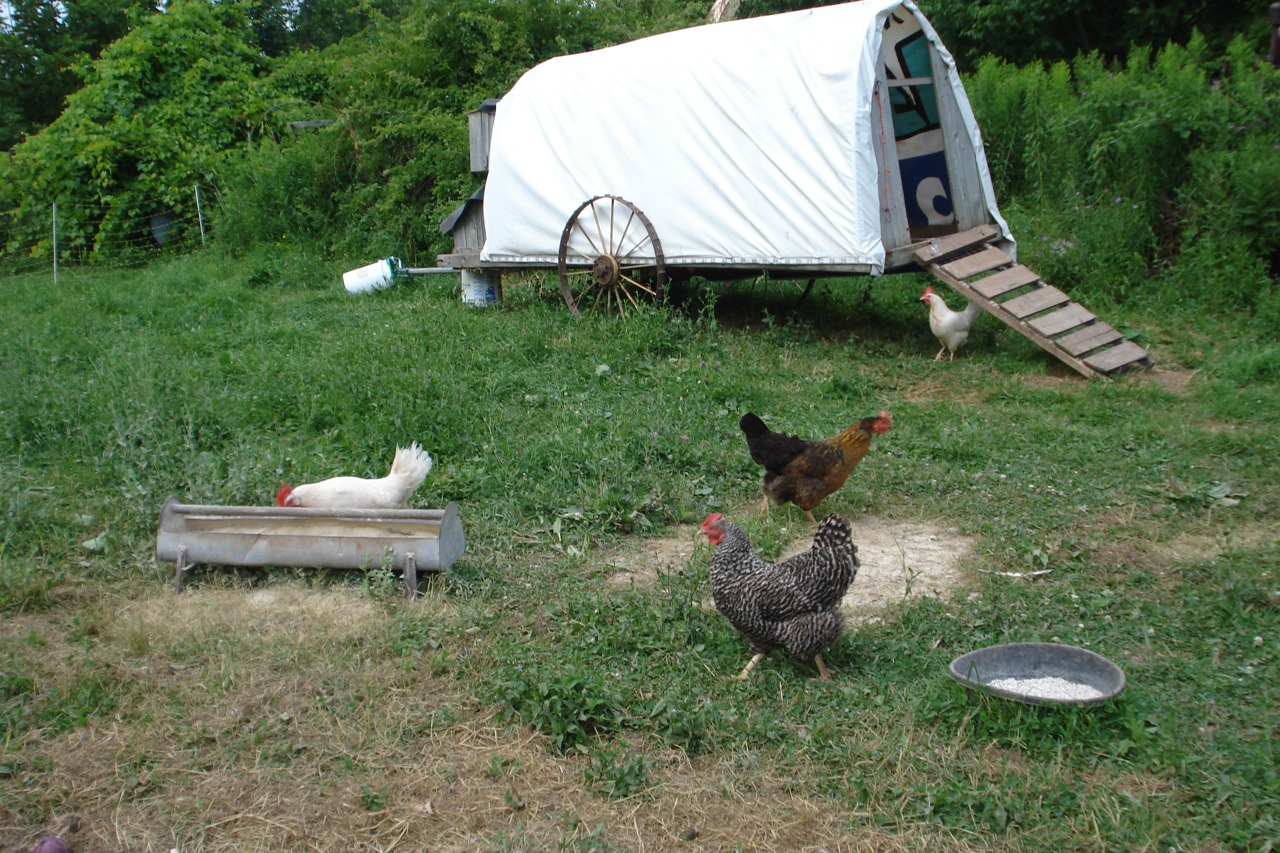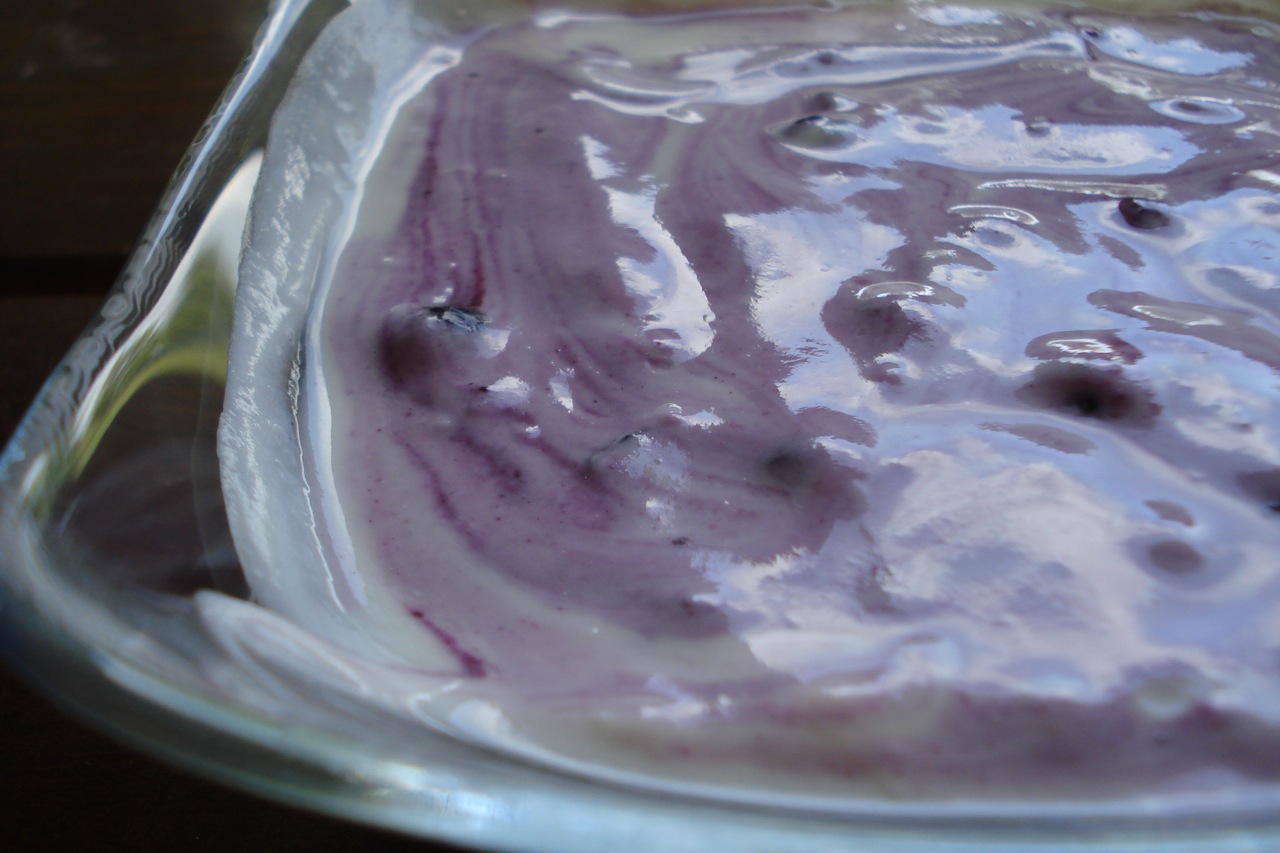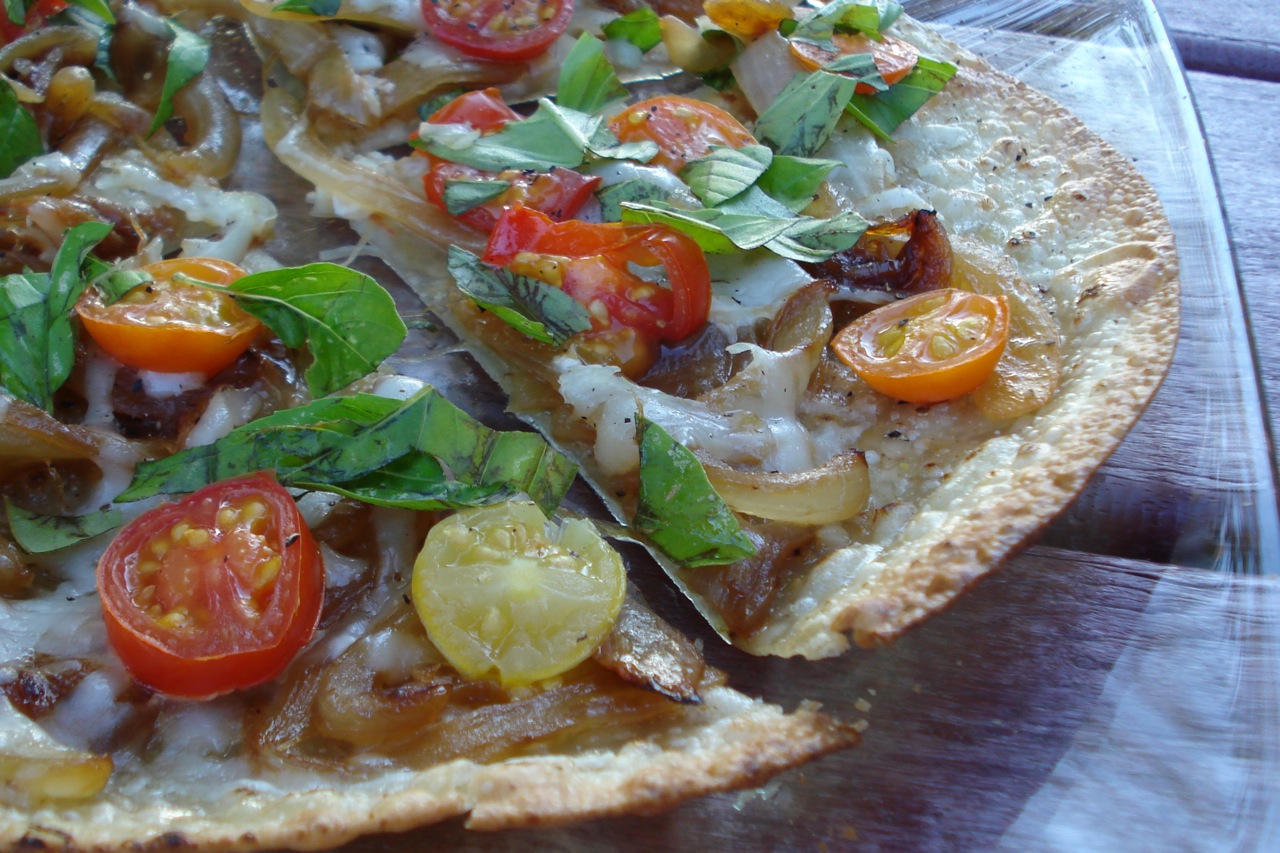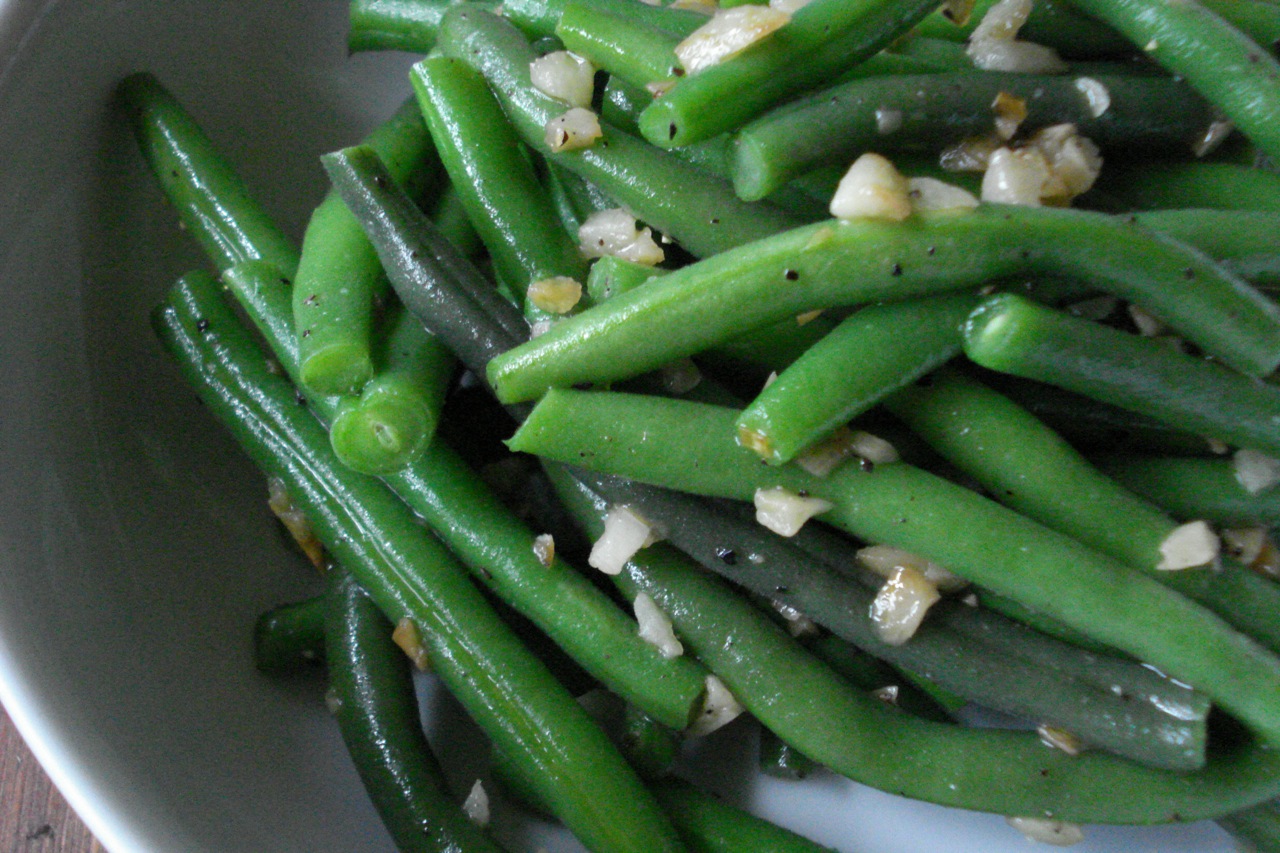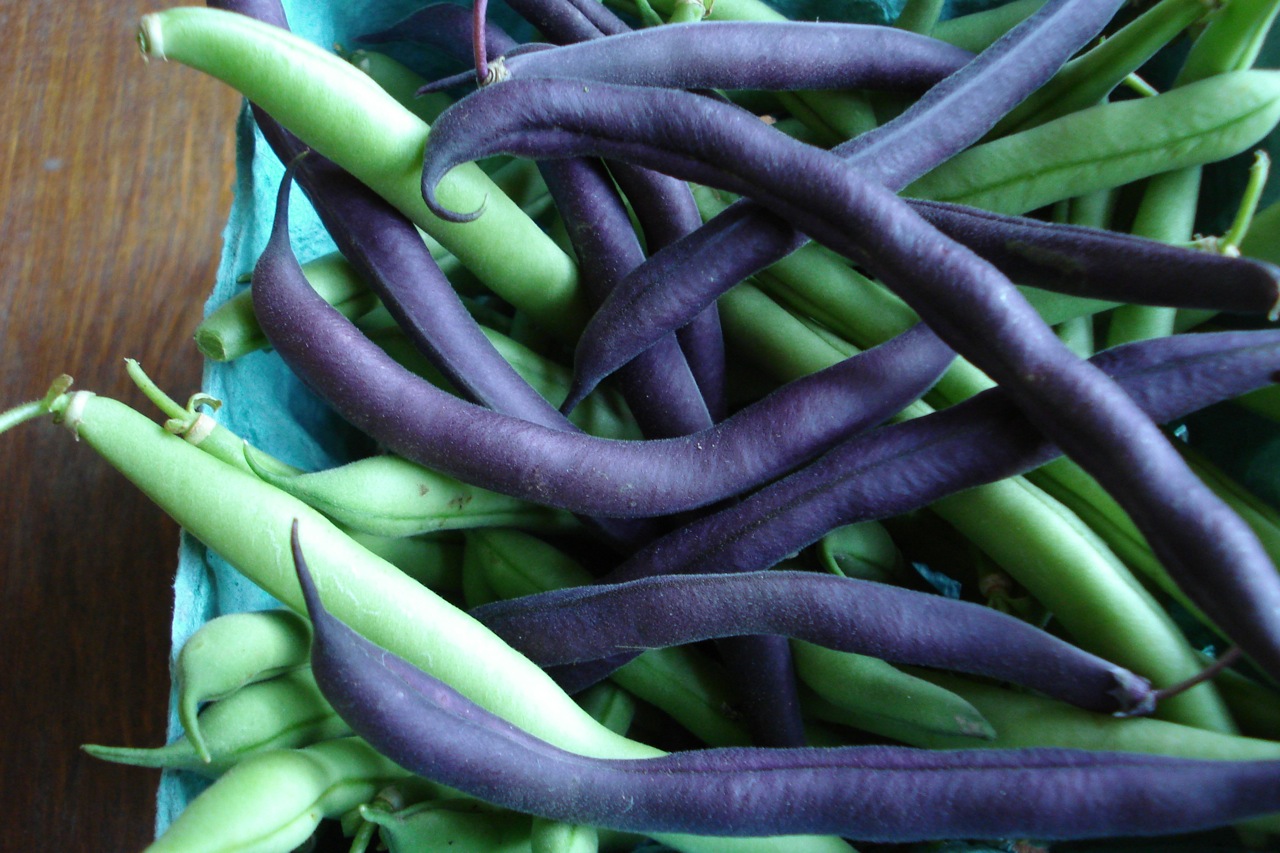Chocolate Chip Cookie Cake
4 eggs, beaten
3/4 cup honey
1 tsp powdered white stevia
1 cup almond butter (or other nut/seed butter)
1 TBSP pure vanilla extract
1/2 tsp pure salt
1/4 cup cream of buckwheat cereal (dry – straight from the box)
1/4 cup tapioca flour
1/2 cup coconut flour, sifted
2 cups quinoa flakes
1 tsp baking soda
1/2 tsp baking powder
2/3 cup chocolate chips (I use Navitas Naturals Sweet Cacao Nibs – one 4-0z bag)
1/2 cup coconut oil, melted
- Pre-heat oven to 350.
- Beat all ingredients together with an electric mixer.
- Divide into 2 square greased baking dishes (I use coconut oil to grease pans).
- Bake for about 22 minutes, being careful not to over-bake.
______________________________________________________________________________________
SIDE NOTES:
~ Adapted from “The Spunky Coconut Cookbook”
~ Originally had a different (more seasonal) recipe in mind to post today, but shifted gears at the last minute. This cookie cake was my contribution to yesterday’s get-together at a friend’s house. Part 1 of the get-together was a super-cool tubing excursion – which was a 2 hour, lazy float down the West Canada Creek. How very nice it was – w/ sun & scenery & friends =) In any case, I was asked if the cookie cake recipe was on my blog, & that’s when I realized it wasn’t, even though I’ve had it in rotation for almost a year now. I decided today was indeed a good day to post it (after all, when is cookie cake not in season??) =)
~ I was also asked if it was difficult to make, and I answered no, as it’s not. But typing it up now, I do realize it’s a longer list of ingredients than I normally use for baking – and some of those ingredients are not things people ordinarily have around the house. SO, maybe I answered incorrectly! And come to think of it, that’s probably why I’ve been subconciosly avoiding posting it. I know people get turned off by a long list of strange ingredients, and I try to avoid posting too many recipes like that – but for today – se la vi =)
~ This “cake” is real food – with fiber, protein, antioxidants, vitamins, minerals and more. The recipe yields 16 servings, and each one contains less than a tablespoon of honey (3/4 TBSP to be exact). That’s pretty low for a delicious, sweet tasting, dessert food.
~ You’ll probably have to take a trip to the local health food store for some of the ingredients. The cream of buckwheat cereal & quinoa flakes can be found in the cereal aisle (or in the gluten free aisle if one exists). The tapioca flour & coconut flour should be with the other flours, but might also be hiding in the gluten free aisle as well. The stevia powder will be either in the sugar aisle or supplement aisle. Don’t worry about wasting your money on all these strange ingredients (you might imagine, the remains of which will just sit in your pantry rotting). I predict you will use them all up, making this cake, again & again & again =) AND, keep in mind, it’s presicely these odd ingredients that give this cookie cake some of its super powers.
Dairy Free, Gluten Free, Egg Free, Nut Free, Sugar Free, Grain Free, Vegan, Raw
If eating gluten free, be careful with your choice of vanilla and chocolate chips. If eating dairy free, be sure there are no milk ingredients in your chocolate chips. If you can’t eat nuts but can tolerate sunflower seeds, use sunbutter (which would make this recipe nut free).
~ I highly recommend seeking out the Navitas Naturals nibs (or other reputable brand), as high quality chocolate is such a super food – loaded with antioxidants (flavanols & polyphenols). Why feel guilty about splurging with chocolate when you can feel fantastic about it!? Unfortunately, most of the chocolate out there is junk food, due to additives & the way it’s processed. Just because a particular brand of chocolate chips is gluten free or dairy free, doesn’t mean it’s junk free.
~ I’m a big advocate of coconut oil (click here for more details—–>MY-OILS-OF-CHOICE, but you can use melted butter if preferred. If you do use coconut oil, the idea is to melt it over low heat & remove from burner right away (you want it melted, but not necessarily hot). I mix it into the batter last (right before the choc nibs), so that the cold eggs don’t harden the oil (coconut oil will return to its semi-hardened state if mixed with something very cold). The other way to avoid that is to let the eggs sit out on the counter for an hour or 2 before cracking them open, so they’re not so cold. Then it doesn’t matter so much when you add the coconut oil. Either way will work. I also use the coconut oil to grease the baking dishes.
~ Freezes well. I make a batch of this & cut it up into 16 triangles (8 triangles per baking dish). I then individually wrap each triangle in parchment paper & freeze together in a large zip-lock bag. The kids love when they find this as a surprise in their lunchbox & I love that it’s so good for them =)
~ Alright, I might have used too many smiley faces in this post, but what can I say – This cake makes me happy =) =) =) =)
Roasted Eggplant & Tomato Salad Sandwich
eggplant, peeled & cut into rounds
extra virgin olive oil
pure salt & freshly ground pepper to taste
TOMATO SALAD<—–(click to view simple reciepe)
bread of choice
fresh basil (optional)
feta cheese or fresh mozzarella (optional)
- Pre-heat broiler.
- Lay eggplant on broiler sheet, brush with olive oil & sprinkle w/ salt & pepper.
- Cook under broiler until done to your liking (about 10 or 15 mins).
- Remove tray from oven & turn eggplant slices over.
- Brush second side with olive oil, and broil again until they look good.
- Layer eggplant and tomato salad on your favorite bread & pour some of the juice from the tomato salad over the top.
Fugghetaboutit.
______________________________________________________________________________________
SIDE NOTES:
~ This sandwich was first made for me many years ago by my Dad, who often made it w/ his fire-fighter buddies during down-time at Brooklyn’s fire station 253. So juicy & delicious.
~ Don’t cut the eggplant rounds too thin, as they’ll shrink quite a bit while cooking.
Dairy Free, Gluten Free, Egg Free, Nut Free, Sugar Free, If eating gluten free, be sure to use a certified gluten free bread. If eating dairy free, omit the cheese.Grain Free, Vegan, Raw
~ Personally, we don’t use cheese with this, as to us, it distracts from the fresh, flavorful veggies, but depending on your taste buds – you might prefer it cheese-y!
~ Here, I served it with a side of YOGURT-CUCUMBER-DIP for the raw veggies. (We also like to dip the sandwich in there too.)
Tomato Salad
tomatoes, chopped
red onion, thinly sliced
a swirl or two of extra virgin olive oil
a few splashes of balsamic (or red wine vinegar)
freshly ground black pepper
Optional add-ins:
fresh basil, or herbs of choice
cucumbers
olives
whole grain bread, sliced into chunks and toasted
feta cheese or mozzarella
______________________________________________________________________________________
SIDE NOTES:
~ There are a lot of options for a tomato salad, but if you’ve got sweet, juicy tomatoes, in season – right off the vine, you don’t need much else! In fact, this type of salad only works with garden fresh tomatoes (try your local farmers market if you don’t grow your own). Unless they’re specifically identified as “vine ripened,” store-bought tomatoes are picked green, and ripened with ethylene during storage/transport. This means they’ll keep longer, but will be mealier, paler in color, and bland in taste, compared to garden-fresh.
Dairy Free, Gluten Free, Egg Free, Nut Free, Sugar Free, Grain Free, Vegan, Raw If you’re eating strictly raw, be sure to use a raw red wine vinegar or raw apple cider vinegar.
~ Tomatoes come in many shapes, sizes & colors. Mix it up for a beautiful salad.
~ It’s best if you make the salad at least a half-hour ahead of time so it has time to marinate.
~ Some like to remove & discard the seeds. Up to you.
~ There was one summer, a few years back, that I ate a tomato & bread salad several times a week. It’s addicting, though I haven’t had that particular version in a while. Here’s how I made it: crush a clove or 2 of garlic into olive oil & saute just a minute or 2. Combine sliced tomato & toasted bread chunks & pour oil/garlic mixture over the top. Stir to combine & add black pepper & fresh basil to taste.
Apple-Cinnamon-Walnut Pancakes
2 large eggs, beaten
1 apple, grated, OR one ripe (speckled) banana, mashed
1/2 tsp cinnamon
2 TBSP (more or less) walnuts or pecans, chopped (or handful of blueberries)
butter, ghee, or coconut oil for frying
- Mix everything together and fry pancakes a few minutes on each side, in a lightly oiled pan.
Serves 2.
________________________________________________________________________
SIDE NOTES:
~ YES – GRAIN FREE PANCAKES !
~ These things get gobbled up pretty quickly. Either version (apple or banana) is amazing. Ridiculously easy. No topping needed. Though keep in mind, they are crepe-like and light. I recommend some seasonal fresh fruit and/or yogurt and honey on the side.
~ Keep pancakes small (about a 3 inch diameter) which will make flipping easier. I use ghee for frying, which gives the pancakes a nice buttery flavor.
~ Adapted from “Eat Smarter”
Enjoy! =)
Dairy Free, Gluten Free, Nut Free, Sugar Free, Grain Free, Vegan, Egg Free, Raw
If eating dairy free, use coconut oil for frying. If you can’t eat nuts, omit the walnuts or substitute something like blueberries.
Miso Vegetable Soup
coconut oil (or sesame oil)
a few cloves of garlic (3 to 5), minced or pressed
a handful of scallions, chopped
a handful of greens (any kind)
about 6 carrots, chopped
about 6 celery stalks, chopped
6 cups water
6 TBSP brown rice miso
- Chop vegetables.
- Saute garlic and white part of scallions (set green part aside to add later) in oil for about 2 mins.
- Add large carrot chunks and saute about 5 mins.
- Add celery & continue to saute a until veggies are tender (just a few mins longer).
- Add water and miso (stirring to dissolve miso).
- Bring to a boil, then lower to a simmer and cook for about 7 mins.
- Turn off heat, add greens, any left-over smaller carrot pieces, and the green parts of the scallions.
- Stir for a few minutes, then serve.
______________________________________________________________________________________
SIDE NOTES:
~ The kids really love this (as do we). It’s a great way to use up any vegetables you don’t know what to do with. There’s really no set recipe – It’s just 1 TBSP of miso for every cup of water and any vegetables you happen to have on hand. Just remember to add the harder veggies (like carrots) earlier, & any type of green-leafy right at the end.
~ Miso is a salty, tangy, fermented soy product – a staple in Japanese cooking. It’s a paste of sorts that dissolves in water & comes in a few varieties. The light-colored misos will have a milder, sweeter flavor (white & yellow). The darker ones will be richer tasting and more on the salty side (brown & red). You can use any type of miso in this recipe. It can be found in the refrigerator section in the nature’s place area of your grocery store, or at your local health food store. Comes in a jar or tub (like a tub of butter). Miso (along w/ tempeh) is one of the healthiest forms of soy you can eat. (& so easy – just scoop it into some soup!)
Dairy Free, Gluten Free, Egg Free, Nut Free, Sugar Free, Grain Free, Vegan, RawIf eating gluten free, be sure to check the miso label, as sometimes it also contains a glutinous grain (like barley or wheat).
~ If using sesame oil, you can use either regular or toasted (or a swirl of each).
~ This is a really light, delicious soup. We happened to have a bunch of very pretty rainbow carrots, purple-tipped scallions, and fresh bok-choy from our CSA farm. Found some celery in the crisper drawer, & it all made a great combo for this soup.
Flourless Walnut Brownies
1 cup nut-butter (almond, peanut…whatever type you like)
2 eggs
1/4 tsp pure salt
1/3 cup plus 2 TBSP honey
1/4 tsp pure vanilla
1/4 cup cocoa (or cacao) powder
1/2 cup chopped walnuts, divided
1/4 cup chocolate chips or nibs (more or less)
- Preheat oven to 325°.
- Grease an 8×8 square baking dish.
- Mix all ingredients except choc chips & walnuts into a bowl, & beat with electric mixer.
- Mix in some of the walnuts (I mix in about 6 TBSP & sprinkle about 2 TBSP over the top).
- Press mixture evenly into baking dish.
- Sprinkle remaining walnuts & chocolate chips over the batter.
- Bake for 25 mins on middle rack.
______________________________________________________________________________________
SIDE NOTES:
~ Adapted from the Spunky Coconut Cookbook.
~ If you like to make every bite count, I can recommend a few products, such as “Really Raw” brand honey, “Navitas Naturals” cacao sweet nibs (for choc. chips) & cacao powder (both loaded w/ antioxidants & trace minerals).
~ I use PECAN-BUTTER for this and it is heavenly!
~ The recipe can be doubled using a 9×13 baking dish (bake time is the same).
~ Freezes well (I cut into individual servings before freezing).
Dairy Free, Gluten Free, Egg Free, Nut Free, Sugar Free, Grain Free, Vegan, Raw
If eating gluten free, be careful choosing your chocolate products and vanilla (if using). If you can’t eat nuts but can tolerate sunflower seeds, use sunbutter and omit the walnuts or use sunflower seeds (which would make this recipe nut free).
Meat
Having been a vegetarian the past 13 years, I’m familiar with the many valid, ethical and environmental reasons to avoid supporting the meat industry. While I realize this topic is sensitive to many, personally, I’m beginning to understand that I don’t have to be completely exclusionary in order to uphold my ethical values – especially in light of newer options. That being said, this page is dedicated solely to nutritional points of view.
Before I outline the health benefits of high quality meat, it’s probably a good idea to note that individual needs vary, and you’ll have to decide for yourself, where you stand in regard to meat consumption….
~ Some are eating more meat than is good for them & should consider cutting it back a bit.
~ Some do better, health-wise, without any meat at all.
~ Some who avoid meat altogether, might be better off adding it to the mix every now & then.
~ And this little piggy went weeweeweeweewee all the way home….. 😉
___________________________________________________________________________________
BEEF
These days, many health conscious people try to avoid eating red meat, as it’s been called out as one of the major culprits in heart disease and cancer. That may be true, but perhaps we need to come up with a different name for it, as the majority of “meat” at the grocery store, is more like a faded memory of something else.
If you take a normal animal, living a normal life, eating a normal diet, and turn it into food – you get normal meat – real meat (the stuff our ancestors ate for millions of years without the existence of cancer or heart disease).
Now, if you take that same animal, start mass-producing it, raise it in an unnatural setting, engineer it with hormones so that it grows 4 times faster than normal, deny it its natural food source, and fatten it up on something it was never meant to eat, well then, sure, I can see how meat like that can cause quite a few “people problems” – including cancer and heart disease. I can see why people are advised not to eat it.
The unfortunate part of this scenario though, is the fact that “meat” itself is called out as the bad guy, when it’s actually very good, provided it’s the real deal.
A cow is a cow. This is not build-a-bear workshop here. Let a cow be a cow. (For goodness sake!)
When animals are controlled & manipulated this way, their bodies change, their meat changes. Certain animals were meant to roam on and consume fresh, green, grass. When they’re forced to live strictly on grains (& other random “feedstuff”), in crowded, unhealthy conditions….things happen
______________________________________________________________________________________

Compared to grain fed, GRASS-FED BEEF is….
~ lower in total fat (which makes it lower in calories). Switching to grass-fed meat will save the average meat-eater 17,733 calories per year. This means, without making any other changes in your diet or lifestyle, you’ll lose 6 pounds a year. That’s not bad considering there’s no willpower involved – Just swapping grain-fed for grass-fed.
~ 4 times higher in vitamin E. That’s a good thing, considering many Americans are deficient in it. Vitamin E (which is also a potent antioxidant), lowers the risk of both heart disease and cancer, and also has been shown to contain various anti-aging properties.
~ 8 times higher in beta-carotene, which is very protective for both the skin and eyes. It’s also been shown in many studies to protect against various degenerative diseases, including heart disease and cancer.
~ higher in B-vitamins thiamin and riboflavin, which assist in: energy production (turning carbs into energy), good digestion (helping to metabolize protein & fat), brain/nervous system function (helps memory & mood), and skin, hair, & nail health (skin/hair/nails are constantly growing & renewing – deficiency in B vitamins can cause things like hair shedding, dermatitis, wrinkles, acne, rashes, dull/grey skin, & weak/splitting nails.)
~ higher in calcium, magnesium & potassium, which are so important to bone and heart health (among other things…)
~ higher in total omega-3s (health benefits outlined on “fish” page)
~ has a better ratio of omega-6 to omega-3, which is linked to lower risk of cancer, heart disease, diabetes, obesity, and mental disorders. Most people in the US have too much omega 6 & not enough omega 3.
~ between 3 & 5 times higher in CLA (conjugated linoleic acid). This is great news, as the type of CLA that’s in grass-fed meat and dairy (there are actually 16 different kinds of CLA, each with its own set of health benefits) is showing great promise as one of the most potent, cancer fighters around. Nice!
~ higher in vaccenic acid (which can be converted into CLA within the body)
~ lower in the types of saturated fats linked w/ heart disease
~ extremely less likely to contain the dangerous E.Coli bacteria. The National Academy of Science reports as many as one out of every three cows may carry the deadliest strain of E. Coli (this doesn’t mean that everyone who comes in contact with it becomes ill – only those with weakened immune systems who can’t fight it off). Luckily, these statistics don’t apply to grass-fed cattle.
www.americangrassfedassociation.org/FAQs
www.eatwild.com/healthbenefits
www.csuchico.edu/grassfed/researchliteraturecomplilation
www.americangrassfedbeef.com/healthbenefits
www.motherearthnews.com/grassfedmeat
_____________________________________________________________________________________
So, it could be true, that some problems associated with meat consumption have more to do with where “modern meat” comes from, and less to do with real meat – the way it was before we started messing with it so much.
Grass-fed beef is becoming more & more available these days if you look for it, and for many, is a perfectly healthy food, in moderation.
Sally Fallon, in her book Nourishing Traditions, has a nice paragraph on the merits of red meat….
“Red meat is an excellent source of both macro & trace minerals, particularly zinc & magnesium. In meat, these minerals exist in a form that is much easier for the body to break down and utilize than the minerals in grains and beans. Red meats are rich in vitamin b12, so important for a healthy nervous system and blood; and in carnitine, which is essential for healthy functioning of the heart. Beef and lamb fat contain fat-soluble vitamins and small amounts of essential fatty acids, especially if these animals have been allowed to graze on green grass. These fat-soluble vitamins are what your body needs to utilize the minerals in all foods. In animal studies, beef fat has a cholesterol-lowering effect. Lamb and beef fat are rich in conjugated linoleic acid (CLA), which has strong anticancer effects; and both lamb and beef fat contain palmitoleic acid, which protects us from viruses and other pathogens.”
Beef, of course, is also a good source of protein and heme iron (the most absorbable kind of iron you can get from food). Keep in mind however, that one of the problems associated with over-doing red-meat is the fact that too much heme iron can be irritating to the lining of the colon (increasing the risk of colon cancer if consumed too frequently over a long period of time). This is one example of why, even healthy foods need to be eaten in moderation.
________________________________________________________________________
In reference to organic beef, see my “organic foods prioritized” page.
___________________________________________________________________________________
A WORD OF CAUTION: Grilling meat over an open flame is not the best way (health-wise) to cook it. When meat and meat fat come into contact with an open flame, certain undesirable substances are formed – heterocyclic amines (HCAs), polycyclic aromatic hydrocabons (PHAs), and advanced glycation end producst (AGEs). Two of these substances – HCAs & PHAs – are potent carcinogens (PHAs are actually what’s used to induce cancer in lab animals). AGEs increase risk of heart disease, diabetes, & kidney disease. When cooking meat at low to moderated temperatures in a pan or in liquid, relatively few of these substances are formed. That being said – it’s a good idea to eat grilled meat less frequently, but no need to eliminate it entirely…..
A LOOP-HOLE for BBQ grilling….When you do fire up the grill, be sure to eat plenty of antioxidant rich foods with your grilled meat, as studies have shown that eating green vegetables such as spinach, broccoli, cabbage, brussels sprouts; fruits such as blueberries and cherries; as well as drinking red wine, will protect the body from the damage caused by excessive heat and open flames. Even when eating oven-cooked meat, choosing some of the above mentioned side dishes (as opposed to potatoes) is a good idea as well.
Enjoy grilled meat when taking into consideration a few easy (& tasty) preparation guidelines.
~ Trim the fat off of the meat before you grill it, as PHAs are formed when the fat drips onto the heat source, causing excessive smoke to surround the meat.
~ Always avoid charring your meat (don’t eat the black/brown parts). This type of over-cooking is what creates HCAs, and they’re most concentrated in the blackened part of the meat. Just give it a quick cook – lightly seared – rare to medium-rare is best.
~ Cook smaller pieces of meat which call for a shorter cook time – giving harmful substances less time to form.
~ Use generous amounts of spices (which are loaded with antioxidants) as either a dry rub, or included in a juicy marinade. Virtually any spice will help to protect meat – both the cows & yours =) – but in case you’re curious, the following spices are the most potent – cloves, cinnamon, Jamaican allspice, apple pie spice, oregano, pumpkin pie spice, marjoram, sage, thyme, gourmet Italian spice. (Not that anyone wants their steak to taste like apple pie – or do they!?)
~ Marinating meats before grilling can reduce HCAs by an enormous amount (up to 90% according to some experts). Also, using something acidic in the marinade, like vinegar or lemon juice will reduce the amount of AGEs as well.
www.journalofagriculterandfoodchemistry/whenredmeatmeetsredwine
www.theamericanjournalofclinicalnutrition/addingantioxidantrichspicestomeat
www.mercola.com/addingspicestomeat
www.foodnavigator.com/addingspicestomeat
www.oxfordjournals.com/greenveggies&meat
_______________________________________________________________________________
LAMB
Lambs are young sheep (less than 1-year-old).
The benefits:
~ Lamb is more likely than beef to have been grass-fed, but double-check your source. Same long list of benefits pertaining to grass-fed cows applies here – see above.
~ Lamb is high in protein and low in calories. It also contains good amounts of selenium, vitamin B-12, niacin, zinc and phosphorus. These nutrients help to maintain our immune system (zinc), protect the heart (B-12), turn food into energy (B-12), and protect against Alzheimer’s & cognitive decline in general (niacin).
________________________________________________________________________________
POULTRY
Free-range poultry is another high quality protein source.
Chicken contains many minerals, including calcium, magnesium, zinc, iron, and the powerful antioxidant/cancer fighter – selenium. Turkey is also a good source of selenium, as well as niacin, vitamin B-6 and CLA. (And by the way, it’s not turkey – or its tryptophan – that make you sleepy on Thanksgiving. That post Thanksgiving-day-meal coma is simply due to the fact that we ate too darn much. Blood rushes from our heads to our digestive tracts to help w/ the over-load. That’s when we turn into mush on the couch.)
Not too many people realize that the European Union has banned the import of all US poultry since 1997. Despite periodic pressure from the US to lift the ban, it’s still in place more than a decade later. Why? It’s standard practice in the US poultry industry to wash the carcasses in chlorinated water to kill bacteria. European health authorities aren’t convinced it’s safe to ingest the small amounts of chlorine that remain on the meat, and agreed, once again, in 2008 when it came up, that lifting the ban would “threaten the community’s entire set of food production standards.” John Bowis from the UK went one step further, telling reporters that “lifting the ban would be “outrageous” and would degrade EU citizens to the status of “guinea pigs.” Unfortunately, millions of US citizens are unknowingly playing that role.
www.meatprocess.com/EUbanremainsonUSchicken
I suggest purchasing high quality, pasture raised birds (directly from local farms if possible).
I try to refrain from bringing ethics into the picture when talking about nutrition, but to me, they’re not completely separate issues, as poor ethics practices translates directly into unhealthy meat. Commercially raised chickens are unfortunate creatures indeed. Although it was out of the question for quite a while, at this point in my life, I’ve come to terms with the idea of eating meat – BUT – from an animal that actually lived. 5 weeks of pitch-black imprisonment, manipulation, and torture is not something I want to be a part of, & not something I want in me – no thanks.
______________________________________________________________________________
EGGS
Although we’ve been led to believe otherwise for many decades, the Harvard Medical School Guide to Healthy Eating reports that “No research has ever shown that people who eat more eggs have more heart attacks than people who eat few eggs.” (p. 75)
Similarly, the US National Library of Medicine reports in a 1999 study – “We found no evidence of an overall significant association between egg consumption and risk of coronary heart disease or stroke in either men or women.” They actually found that those who ate 5 – 6 eggs per week had a lower risk of heart disease than those who ate less than 1 egg per week (see link below for details).
It’s interesting how one bad headline can become ingrained into society, so much so, that 50+ years later, it’s still being carried around in our brains somehow. Remember in the old days, when school teachers made a mis-behaving child write on the blackboard “I will not pull Susie Smith’s hair” over & over, a hundred times. Something like that might help us here. “Eggs are good. Eggs are good. Eggs are good….” They really are, and here’s why….
~ Eggs contain the highest quality protein on the planet, consistently scoring higher than beef, milk, whey, & soy. It also happens to be the least expensive animal protein out there. The incredible, edible.
~ Eggs are good food for the eyes. Egg yolks are the most bio-available, richest known source of lutein and zeaxanthin – 2 important nutrients known to effectively protect the eyes from “macular degeneration” (the leading cause of blindness in people over 55). (Bio-availability simply refers to nutrients in a form the body can recognize and utilize immediately. Some nutrients pass right through us, unused, which would make them “bio-UNavailable” – though don’t know if that’s a real word!)
~ Eggs are good food for the liver. Due to its choline content, egg yolks help to prevent the accumulation of cholesterol and fat in the liver (how ironic, as people tend to avoid eggs – [and the yolk in-particular] under the assumption they cause this type of cholesterol accumulation).
~ Eggs are good brain food. Again, due to their choline content, eggs enhance brain function, boost memory/thinking capacity, and help to protect from certain types of dementia.
A 2007 study published in Mother Earth News showed the following differences when comparing eggs from pastured chickens, to those from commercially raised.
Eggs from pasture raised chickens have…..
~ 1/3 less cholesterol
~ 1/4 less saturated fat
~ 2/3 more vitamin A
~ double the omega 3 fatty acids
~ 7 times more beta-carotene
Additionally, according to eatwild.com, eggs from pastured chickens contain 3 to 6 times more vitamin D than eggs from commercially raised chickens. They also contain higher quantities of vitamin B-12 & folic acid.
You’re most likely to get the best quality (& tastiest) eggs directly from a family farm, at farmers markets, or at your local health food store.
_______________________________________________________________________________
WILD GAME
Wild game are those animals that can be hunted for food. This generally includes venison, buffalo, elk, caribou, and game birds like wild duck, wild turkey, goose, pheasant & quail. All these animals are good protein sources, and have the same benefits listed for grass-fed beef, because of course, they live a natural, normal life, out in the fresh air, surrounded by nature.
We have a good friend who hunts animals of all shapes & sizes, including rabbit & squirrel. Never killed an animal he hasn’t eaten. He does all the processing himself, from beginning to end, and I have to say, I’m both amazed & grossed out by it. Queasiness aside, I have enormous respect for this system (& for him), as ultimately, it’s the most normal way to get meat if you really think about it (as opposed to that tidy, little styrofoam package at the store – One could easily forget what it is their eating & take it for granted). There must be a genuine appreciation and gratefulness that goes along with it. I was really taken when I heard my friend say that tears come every time. I used to think of hunting as a macho thing, but it’s not necessarily so.
Kudos to you Norm, but I’m still not letting you take care of our pet gerbil while we’re on vacation 😉
___________________________________________________________________________________
PIG
Maybe not so much. This one is a bit controversial, but here’s some information I can share to help you make your own decision on how often, if at all….
~ Pigs are scavengers which means they’ll eat anything, including garbage, rotting carcasses, their own feces….(etc).
~ Pigs are also notorious for being infected with parasites & tapeworm, simply because they spend most of their lives rolling around in poop. Most people who cook pork know (I hope) to cook it very thoroughly to ensure all the worms & parasites are killed off (can cause trichinosis if not cooked well enough).
~ Nitrates are bad. Sometimes referred to as nitrites, or sodium nitrite, this is a meat preservative used in hot dogs, sausage, bacon & luncheon meats. It’s very clear that nitrates are potent carcinogens (substances that cause cancer). Of course, unprocessed meat is best, but if this news makes you sad because you love hot dogs/sausage/bacon/cold-cuts – don’t fret! Visit the following link for nitrate free versions of these foods. They also come pork free if you prefer (turkey bacon, chicken/apple sausage, beef hot dogs…etc). You can usually find them at your local health-food store, or perhaps your regular grocery store will pick them up if they get enough requests.
www.applegatefarms.com/companypromise
~ According to health expert Sally Fallon, “Investigation into the effects of pork consumption on blood chemistry has revealed serious changes for several hours after pork is consumed.” AND “In the laboratory, pork is one of the best mediums for feeding the growth of cancer cells.”
~ On a more positive note, there are certain groups noted for longevity (like the Okinawans) who eat pork and lard (pork fat) on a daily basis. It’s thought (but not known for sure) that the preparation techniques (such as using vinegar to ferment the pork before consumption) accounts for their lack of problems with this food.
www.americaljournalofclinicalnutrition.org/bacon&bladdercancer
www.organicconsumers.com/nitrates&cancer
If you do decide to include pork, ham & ribs in your diet, I’d recommend seeking out local farms who raise healthy, pastured pigs.
_________________________________________________________________________
The following website is a great resource to help you locate high quality animal products in your area:
www.eatwild.com/findlocalfarms
_________________________________________________________________________
Believe it or not, I actually took that pig picture myself, on honeymoon in St. John where all sorts of animals just roam around free. We were just driving down a dirt road & our jaws dropped when that came into view. Cute little family. Those chickens are lucky enough to reside at Old Path Farm, and they provide us with our eggs (thank you chickens & OPF). The wild turkeys – mama & babies – (click photo to see the little ones) just happened to be roaming around our backyard one day =)
_____________________________________________________________________________________
Yogurt w/ Berries
3/4 cup plain, whole milk yogurt
1 TBSP honey (or 1/2 of a speckled banana, or 3 drops liquid stevia)
berries of choice
- Mix together yogurt and honey (or mashed banana).
- Stir in berries.
________________________________________________________________
SIDE NOTES:
~ Yogurt is marketed as a health food, but almost all varieties you’ll find at the store are much less than that – containing several undesirable additives. The way around this is to buy plain yogurt, without any additives, and add your own natural sweetener (and fruit if you’d like).
~ To avoid confusion…..If you look at the label of plain yogurt, you might wonder why there are 11 or 12 grams of sugar in it if it claims to be unsweetened. This is just the naturally occurring lactose from the milk (used to make the yogurt).
~ Fresh berries in season are great, but keeping a few bags of high quality, organic, frozen berries in the freezer is really convenient for those in-between times.
Dairy Free, Gluten Free, Egg Free, Nut Free, Sugar Free, Grain Free, Vegan, Raw
Can use dairy free yogurt if need be, and stevia or mashed banana if avoiding sugar.
Tortilla Pizza w/ Caramelized Onions
2 tortillas
extra virgin olive oil
pure salt
garlic powder
1 medium onion, sliced thinly
4 oz shredded cheese of choice (more or less)
tomatoes, sliced (I use about 12 cherry tomatoes & slice them into thirds)
freshly ground black pepper
fresh basil (optional)
- Caremelize onions by sauteing over medium-low heat in olive oil for about 10 to 15 mins.
- Preheat oven to 450.
- Brush tortillas with oil, and sprinkle with salt & garlic powder.
- Top with onions, shredded cheese, sliced tomatoes & cook for 5 mins.
- Remove from oven & add pepper & basil if using.
Serves 1.
______________________________________________________________________________________
SIDE NOTES:
~ Adapted from the Spunky Coconut Cookbook. Extremely easy to throw together, and so tasty.
~ Can use the back of a spoon to spread oil on the tortillas if you don’t have a pastry brush (and go easy on the oil or else it will be too drippy).
Dairy Free, Gluten Free, Egg Free, Nut Free, Sugar Free, Grain Free, Vegan, RawIf eating dairy free, omit the cheese and use an additional vegetable of choice. If eating gluten free, I recommend Food For Life brand brown rice tortillas for this.
String Beans w/ Garlic
butter, ghee, or coconut oil
2 large garlic cloves, minced
string beans, ends trimmed
pure salt & pepper to taste
- Blanch the string beans in salted, boiling water for 1 to 2 mins.
- Run under cold water & drain.
- Saute garlic in butter or oil for about 2 mins
- Toss in string beans, salt & pepper & saute about 5 minutes – or until done to your liking.
______________________________________________________________________________________
SIDE NOTES:
~ I don’t think a vegetable exists that wouldn’t taste great just tossed in a pan with a little butter & garlic. So simple, so good. I like them bright green & crisp, so limit the cook time to about 5 mins.
Dairy Free, Gluten Free, Egg Free, Nut Free, Sugar Free, Grain Free, Vegan, RawIf eating dairy free, use coconut oil instead of butter.
~ So many herbs & spices you could add to this, depending on what you’re in the mood for…..crushed red pepper, fresh basil, a squeeze of lemon juice……
~ I was surprised though, that my deep purple beans did not retain their color after cooking. I can tell which ones they were, as they ended up a darker green that the others. I did not know that pretty color was a temporary phenomenon!





